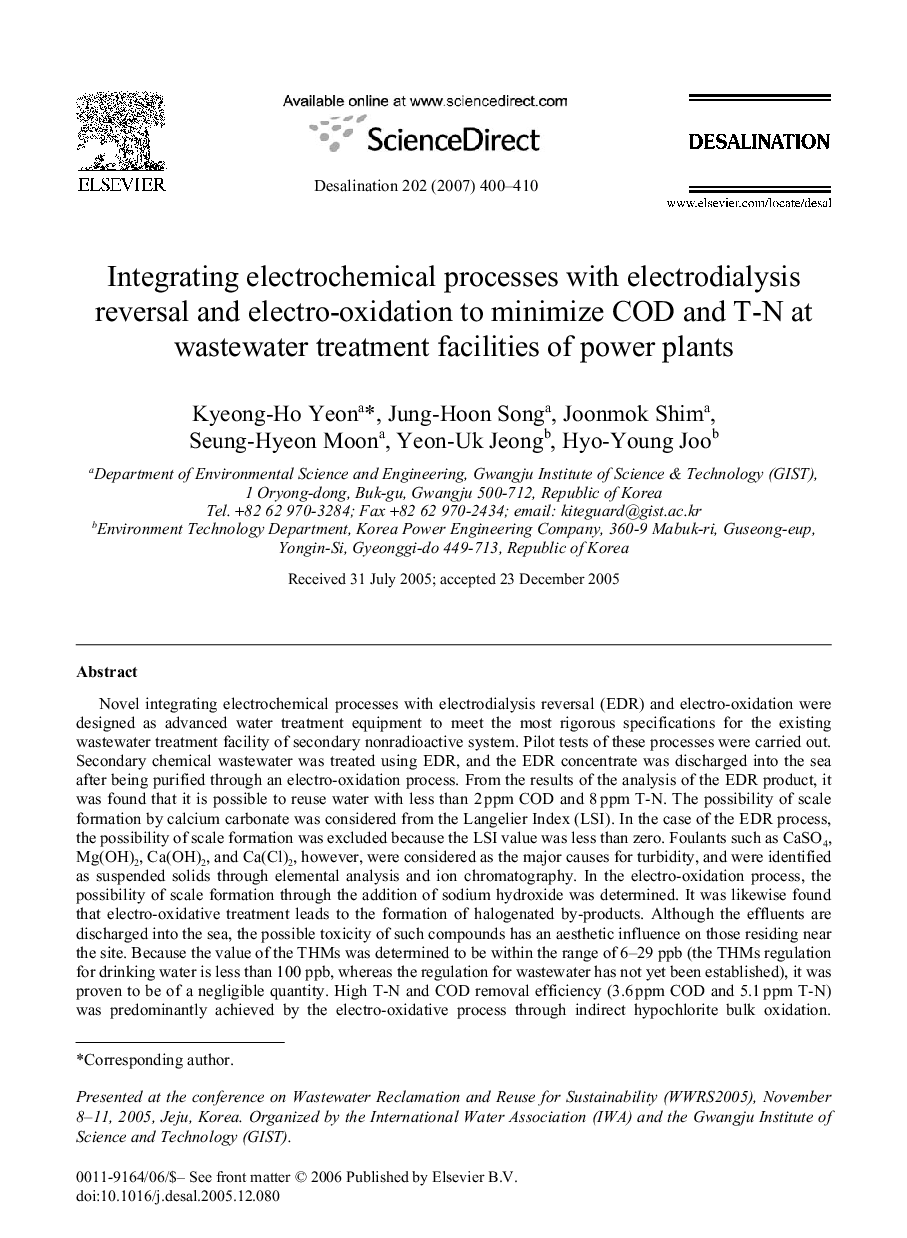| کد مقاله | کد نشریه | سال انتشار | مقاله انگلیسی | نسخه تمام متن |
|---|---|---|---|---|
| 628526 | 1455488 | 2007 | 11 صفحه PDF | دانلود رایگان |

Novel integrating electrochemical processes with electrodialysis reversal (EDR) and electro-oxidation were designed as advanced water treatment equipment to meet the most rigorous specifications for the existing wastewater treatment facility of secondary nonradioactive system. Pilot tests of these processes were carried out. Secondary chemical wastewater was treated using EDR, and the EDR concentrate was discharged into the sea after being purified through an electro-oxidation process. From the results of the analysis of the EDR product, it was found that it is possible to reuse water with less than 2 ppm COD and 8 ppm T-N. The possibility of scale formation by calcium carbonate was considered from the Langelier Index (LSI). In the case of the EDR process, the possibility of scale formation was excluded because the LSI value was less than zero. Foulants such as CaSO4, Mg(OH)2, Ca(OH)2, and Ca(Cl)2, however, were considered as the major causes for turbidity, and were identified as suspended solids through elemental analysis and ion chromatography. In the electro-oxidation process, the possibility of scale formation through the addition of sodium hydroxide was determined. It was likewise found that electro-oxidative treatment leads to the formation of halogenated by-products. Although the effluents are discharged into the sea, the possible toxicity of such compounds has an aesthetic influence on those residing near the site. Because the value of the THMs was determined to be within the range of 6–29 ppb (the THMs regulation for drinking water is less than 100 ppb, whereas the regulation for wastewater has not yet been established), it was proven to be of a negligible quantity. High T-N and COD removal efficiency (3.6ppm COD and 5.1 ppm T-N) was predominantly achieved by the electro-oxidative process through indirect hypochlorite bulk oxidation. Therefore, the electro-oxidation process proposed as a novel treatment strategy for EDR concentrates was successfully implemented herein for the removal of hard-to-treat wastes such as EDR concentrates.
Journal: Desalination - Volume 202, Issues 1–3, 5 January 2007, Pages 400-410